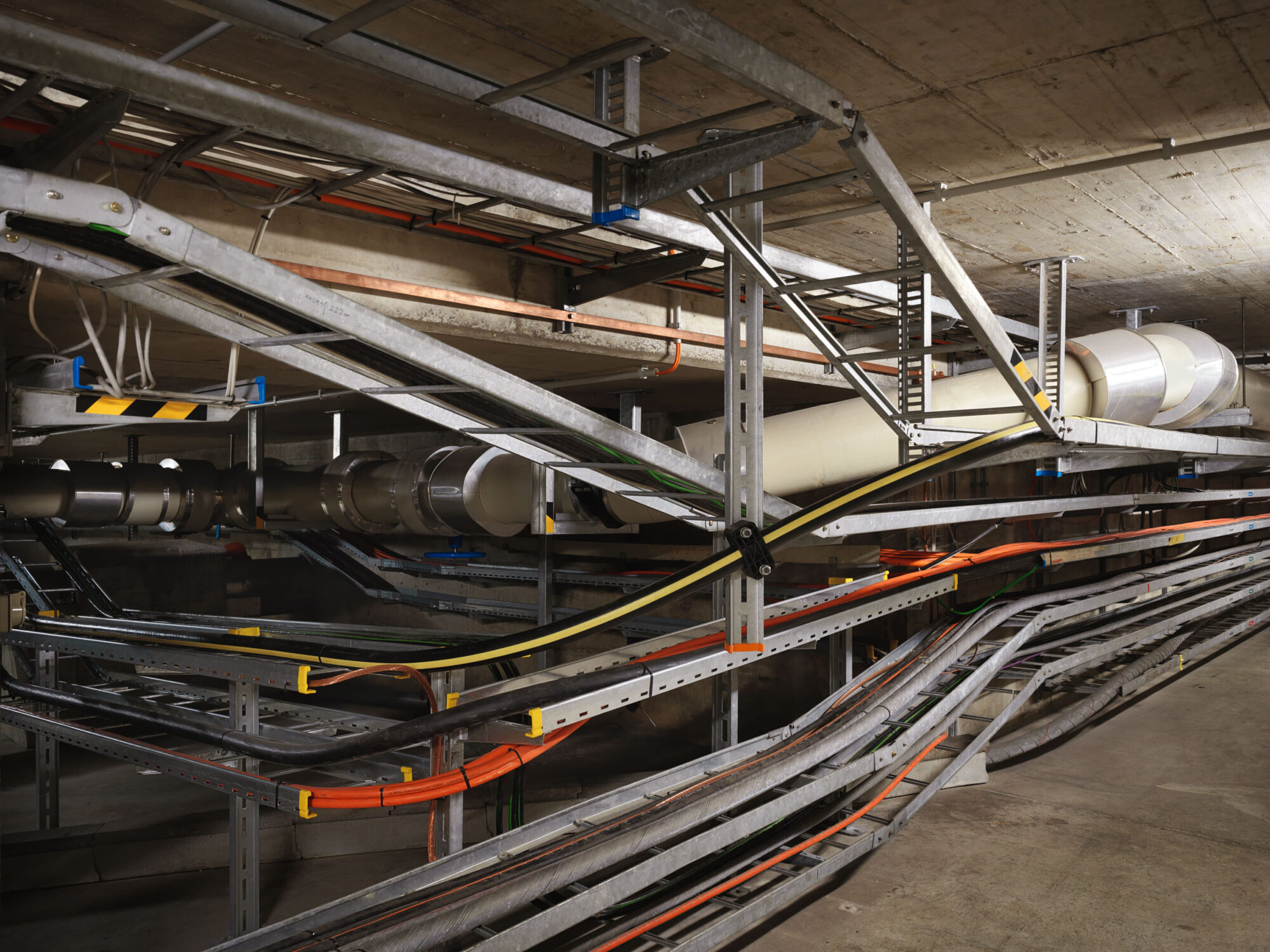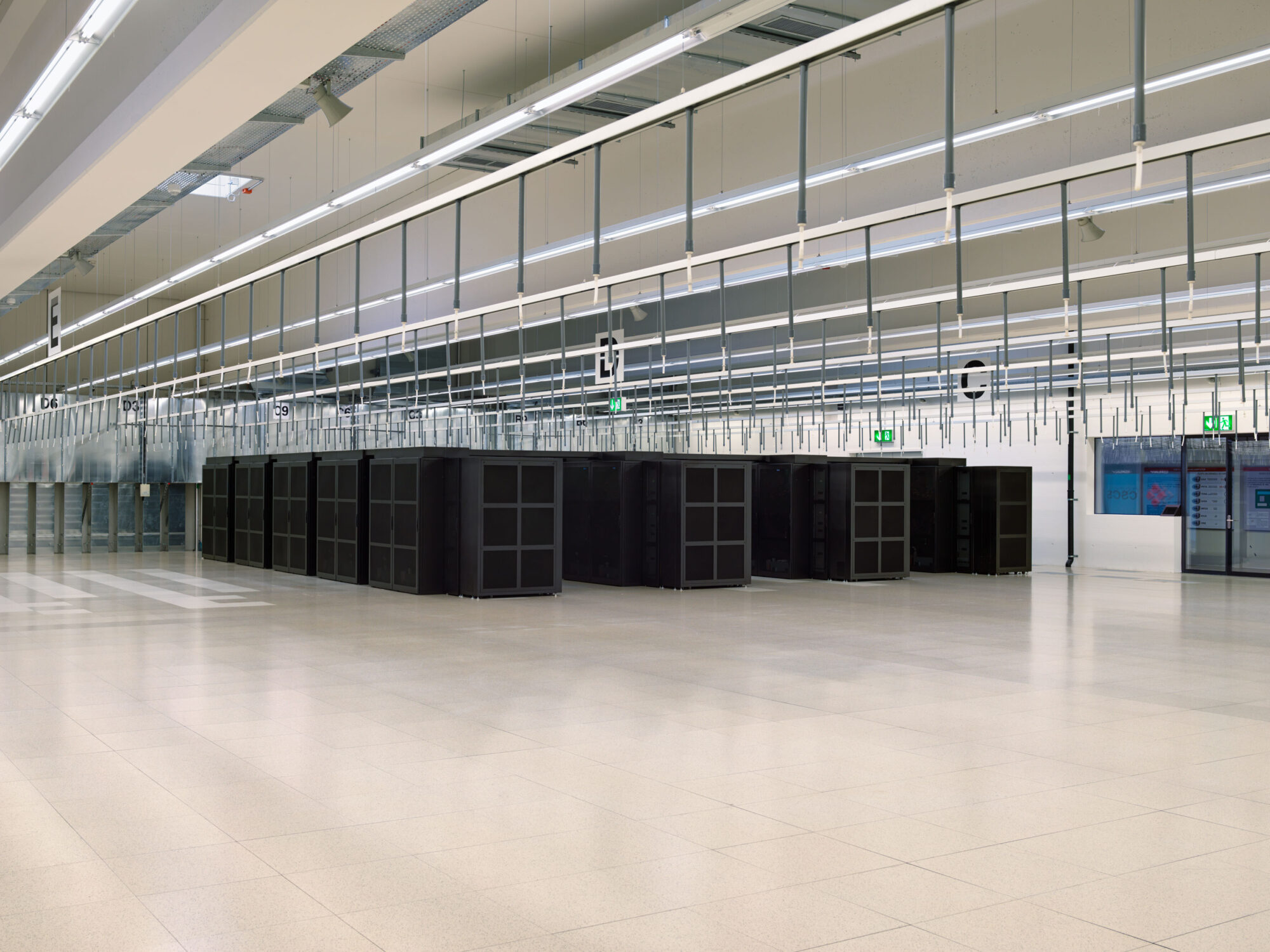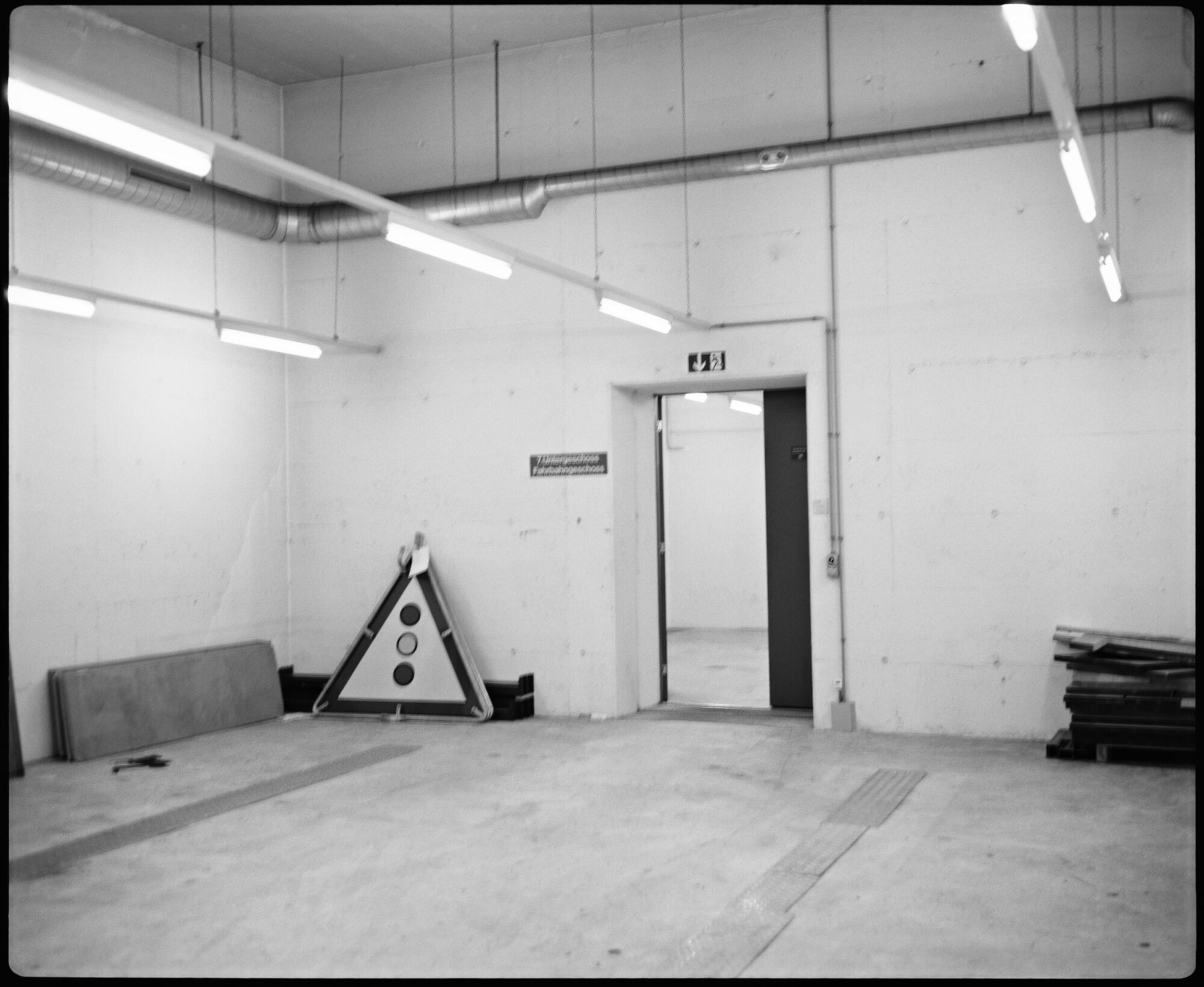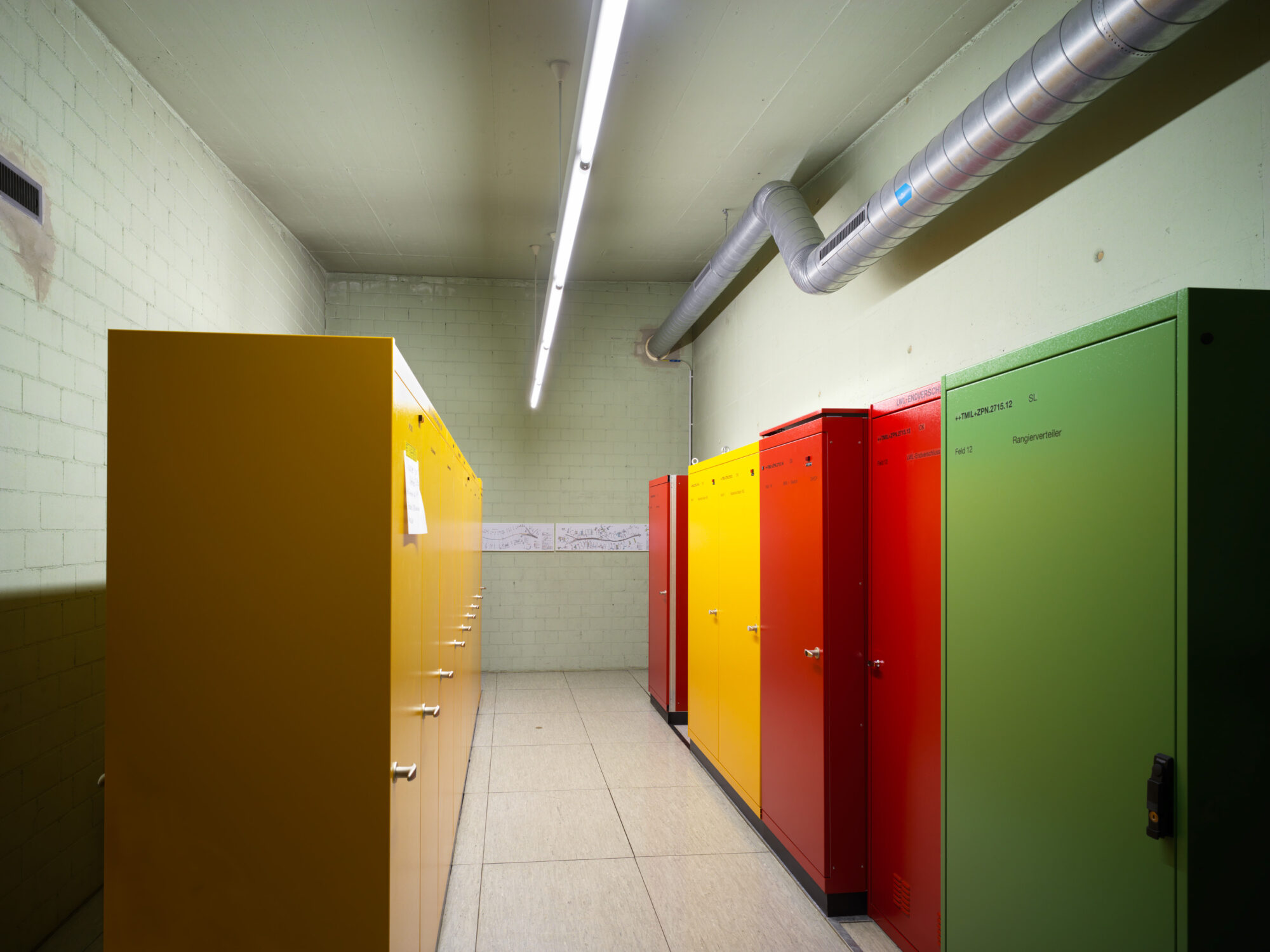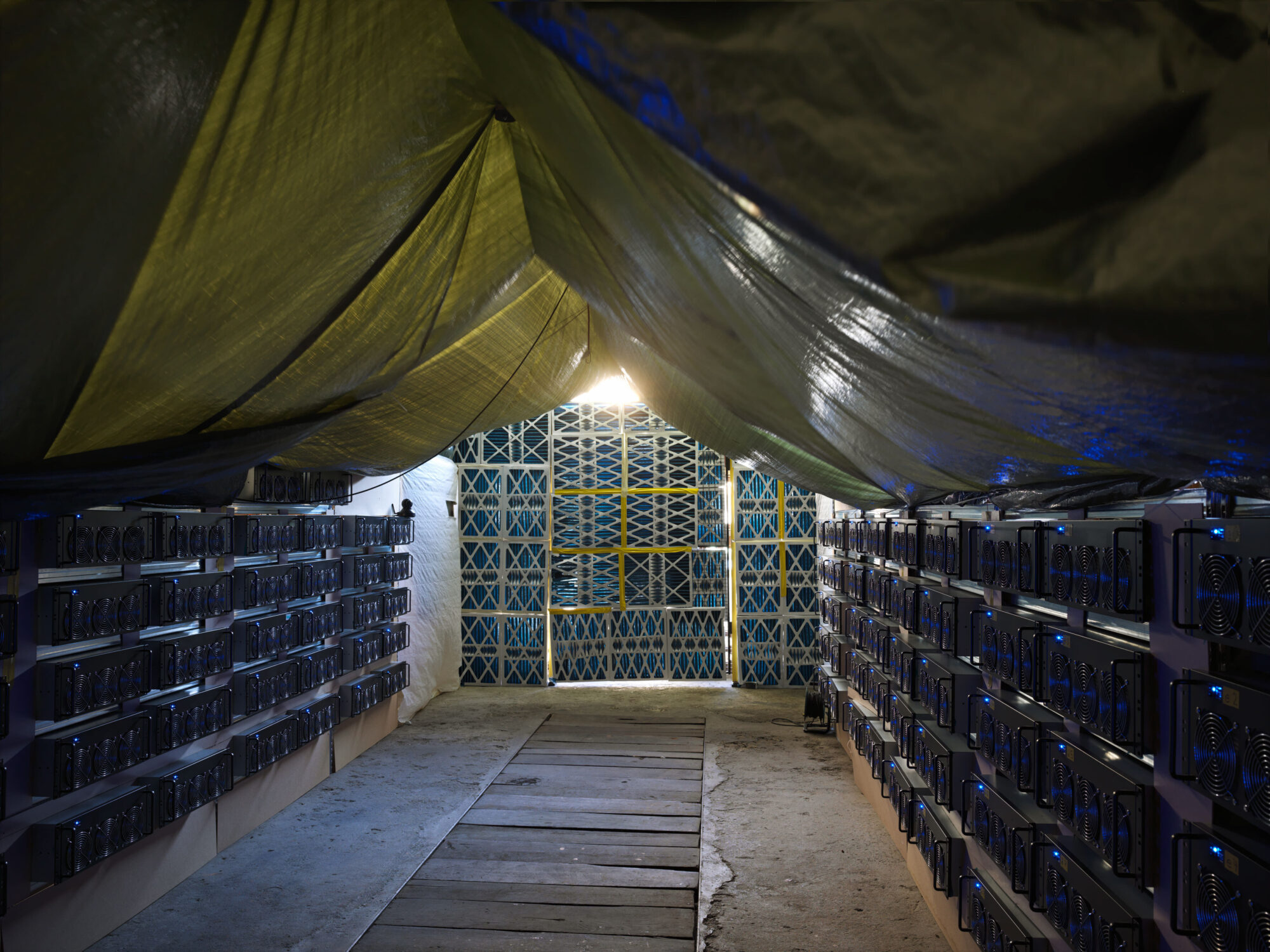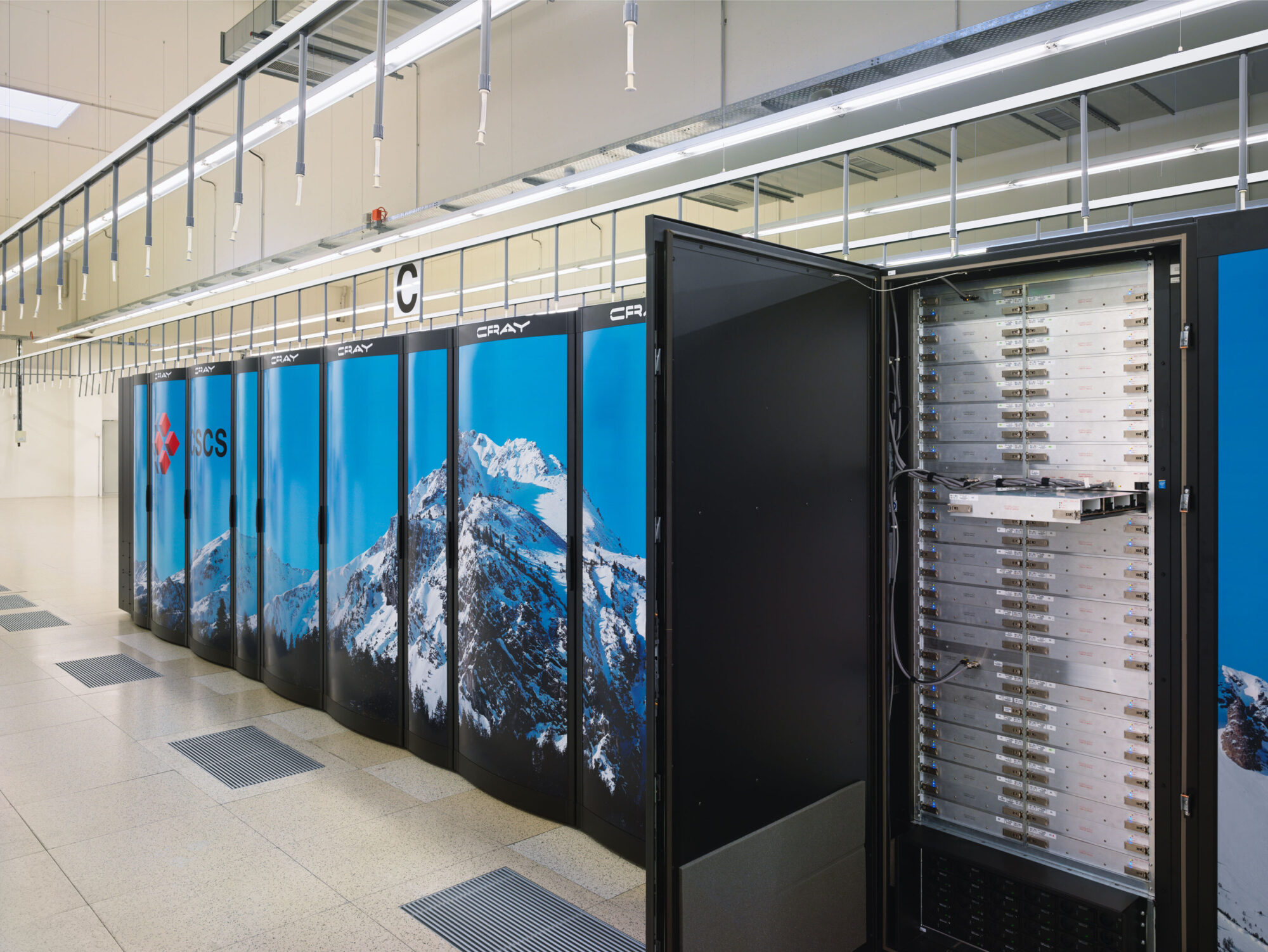Ephemerality, dematerialization, and speed are terms that resonate when we think of digitalization. Gigantic infrastructures underpin every application and every internet-enabled device. These data centers, power plants, and fiber-optic networks exist in our midst – yet usually remain hidden from view. Their architectural design and the way in which they are integrated into their surroundings are geared to the technical, economic, and political precepts of an increasingly digital society.
The installation Kaltgang utilizes standard components that are commonly used in data centers to construct a frame for the serial housing and cooling of servers. Therefore, it brings a formal aesthetic structure that is usually only appreciated as a functional part of data management and distribution into the foreground. Digital hardware is usually based on 19-inch units, a standard that has emerged generically since the 1960s. The walk-in installation on display is an exact replica of the infrastructure used in data centers in 2020. Conceived to be expanded ad infinitum, this architecture can be described as the unseen “Acropolis of the digital age.”


The architectural photographer Andrea Helbling set out with her camera on an expedition through the spaces in which digital infrastructures materialize. Her approach to these places varies considerably: Hebling created these black-and-white images without the tripod that she generally uses, shooting them as fleeting hand-held impressions. Rather than capturing quantifiable information about a particular situation, they hint at sensations and atmospheres that envelop us in the mostly deserted spaces: the haptic and olfactory traits of concrete and steel, sounds and temperatures perhaps. These are things that may strike us and move us in a particular situation, yet remain virtually impossible to classify. Shot on analogue film, sometimes underexposed and sometimes overexposed, the images, with their unpolished and direct nature, call into question the iconography of these technological universes, always showcased in the media as a series of brightly lit, sanitized spaces devoid of any extraneous elements.
Digital Infrastructures
Photographed in Gondo VS (2018), eastern Switzerland (2019), Lugano TI (2019), Milchbucktunnel ZH (2019) and Ostermundigen BE (2019), © Andrea Helbling
Helbling adopted a different strategy in her color photographs, here closely studying the spaces and infrastructure facilities she encountered with her camera in order to transform them into visually comprehensible and compelling images. She embeds them in the urban or rural landscapes and into the times and cultures in which they are located. Infused with knowledge of the invisible, these photographs provide a glimpse into the built reality of the digital world.
The photographs were taken at five specially selected locations:
- In Gondo at the local power plant and at the bitcoin farm located there.
- In a new data center that is currently being built in eastern Switzerland.
- In the Swiss National Supercomputing Centre CSCS in Lugano. Activities here include MeteoSwiss computations for its weather forecasts.
- In the Milchbucktunnel, a conduit not only for vehicles but also for data traffic used in traffic control, telecommunications, and security services.
- In the Electronic Data Center ERZ/W, built in Ostermundigen near Bern in 1972 by PTT (which became Swisscom in 1997). Today it is a ruin of the information age.
Hannes Rickli, Max Stadler, Monika Dommann (Hg.): Data Centers – Edges of a Wired Nation. Zurich: Lars Müller 2020
Kaltgang: Prof. Hannes Rickli, Institute for Contemporary Art Research, ZHdK
Digital Infrastructures: Andrea Helbling, in Collaboration with Collegium Helveticum
